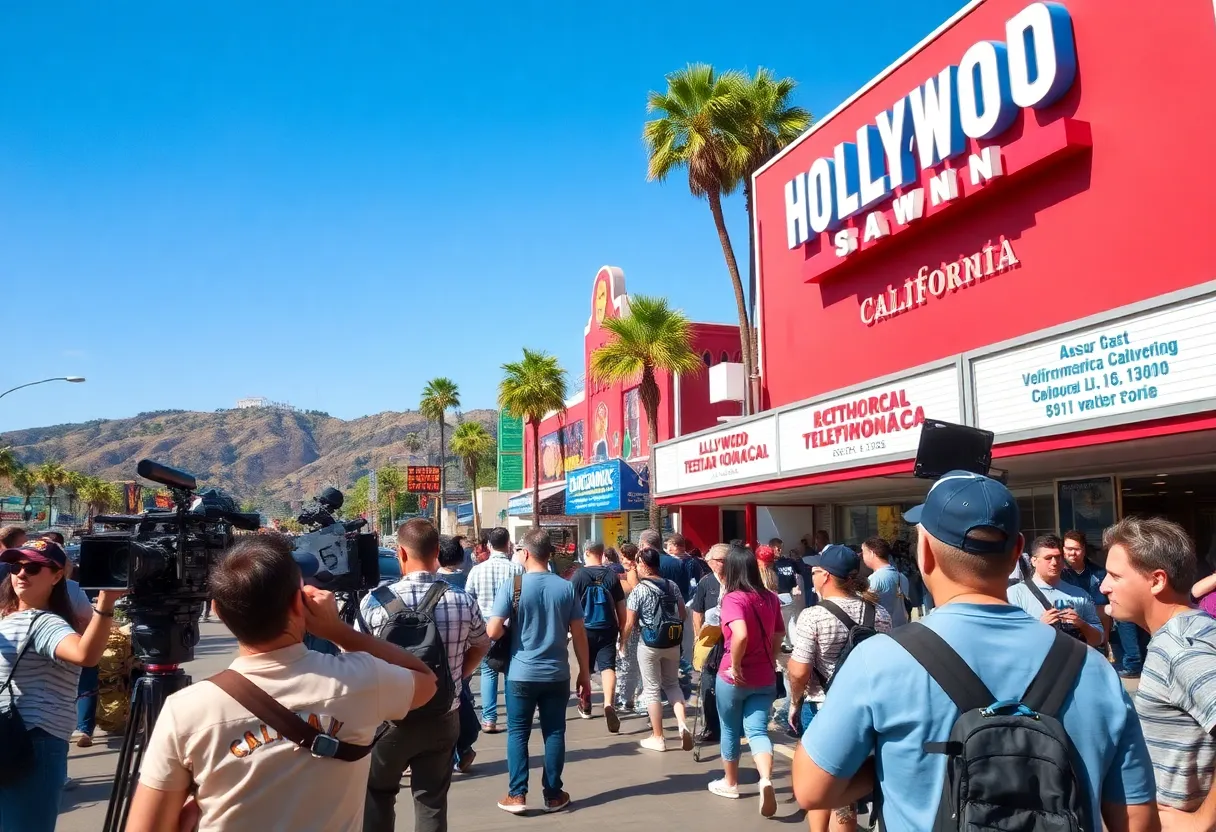News Summary
California has raised its film and television tax credit cap from $330 million to $750 million to attract more productions back to the state. This legislative change, supported by Governor Gavin Newsom, aims to generate significant economic benefits, including over $302 million in wages for industry workers. As competition from other production hubs has intensified, this expansion is seen as crucial for revitalizing California’s role as a leading film industry destination. The new application window for tax credits opens on July 7, providing new opportunities for producers.
California has taken significant steps to bolster its struggling film and television industry by approving an increase in its annual film and television tax credit cap from $330 million to $750 million. This legislative move, championed by Governor Gavin Newsom, aims to attract more productions back to the state, which has seen many leave for regions offering more attractive financial incentives.
The new application window for tax credits will open on July 7, presenting a renewed opportunity for producers looking to fund their projects. The state could potentially generate around $664 million in total spending with this expansion, which includes over $302 million in wages for industry workers, bolstering both the local economy and job market.
One of the primary motivations for the increase is to address the competition posed by other film production hubs, such as Toronto, Vancouver, New Zealand, the United Kingdom, Georgia, and Louisiana. These regions have been enticing filmmakers with generous tax incentives, impacting California’s status as the heart of the entertainment industry. In recent years, the state has experienced a notable decline in film shoots, which has left many industry professionals struggling to find work.
Specific projects expected to benefit from the expanded tax credit include Hulu’s Paradise, CBS’ NCIS: Origins, and Prime Video’s Mr. & Mrs. Smith. The expanded tax credit will increase the percentage for productions shot in the Greater Los Angeles area from 20%-25% to as much as 35%. For productions located outside the Greater Los Angeles area, the tax credit can reach up to 40%.
Support for Industry Workers
Assemblymember Rick Chavez Zbur recognized that the tax credit expansion would provide crucial stability and support for workers statewide, addressing ongoing challenges faced by the industry. Furthermore, Los Angeles Mayor Karen Bass emphasized the city government’s obligation to smoothen the permitting processes for film and television projects in the area. Her administration has stated the need to ease filming conditions, making processes more cost-effective and cutting down on bureaucratic hurdles.
Currently, the number of shoot days for films and television productions in Los Angeles has been declining, primarily due to regulatory red tape and inadequate incentives. In response to this trend, city directives issued by Mayor Bass in May aimed to streamline the filming permit process to encourage a resurgence of productions in the city.
Strategic Positioning for Future Projects
As California seeks to regain its status in the film industry, the California Film Commission plans to integrate the expanded funding into upcoming application cycles, scheduled for next month in July and again for film projects in August. The tax credit cap increase positions California ahead of states like New Jersey, New Mexico, and Louisiana, although it still falls short of New York and states like Georgia that do not impose a maximum allotment on tax credits.
In addition to the current tax credit expansion, officials are also considering a second bill that aims to modernize the program further to enhance California’s competitive edge in the filming landscape. The objective remains clear: to revitalize the production economy following challenges posed by the pandemic, various strikes, and fierce competition from other states vying for Hollywood projects.
Industry representatives have long argued that such tax credit expansions are crucial for the revival of California’s production sector, which has historically established the state as the pinnacle of film and television talent and resources. The adjustments signify a renewed commitment to keeping Hollywood productions in California while supporting local crews and talent cultivation essential for maintaining high production quality.
Deeper Dive: News & Info About This Topic

Author: STAFF HERE BEVERLY HILLS WRITER
The Beverly Hills Staff Writer represents the experienced team at HEREBeverlyHills.com, your go-to source for actionable local news and information in Beverly Hills, Los Angeles County, and beyond. Specializing in "news you can use," we cover essential topics like product reviews for personal and business needs, local business directories, politics, real estate trends, neighborhood insights, and state news affecting the area—with deep expertise drawn from years of dedicated reporting and strong community input, including local press releases and business updates. We deliver top reporting on high-value events such as the Rodeo Drive Concours d'Elegance, the Beverly Hills artSHOW, Concerts on Canon, and holiday celebrations throughout the city. Our coverage extends to key organizations like the Beverly Hills Chamber of Commerce and Visit Beverly Hills, plus leading businesses in luxury fashion, hospitality, and entertainment that drive the local economy. As part of the broader HERE network, including HERELosAngeles.com, HERESantaAna.com, HEREHuntingtonBeach.com, and HERECostaMesa.com, we provide comprehensive, credible insights into Southern California's dynamic landscape.




